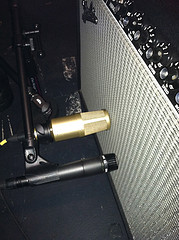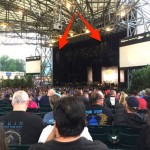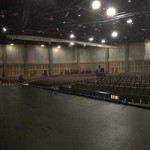
Wider Strategies: Part 2
I’m continuing today with another quick strategy in getting our mostly mono-ish live sound mixes to sound…well, less “mono”.
Strategy 2: Multiple Microphones
Like most of these strategies, you’re going to find that they’re pretty basic. For this approach, we take two microphones that are different types or models and mic the same instrument with them. Oftentimes when engineers mic instruments with multiple microphones, they are using each microphone to capture a certain quality or characteristic each microphone captures best. Then those two microphones are blended together to achieve the desired sound. That’s not what we’re doing here, though.
With this approach, we need to treat each microphone as a standalone entity. Each microphone should be used to present a great version of that instrument, but the idea is not to make them the same. Once each microphone sounds great by itself, we take those two inputs on our console and hard pan them in opposite directions.
The reason this works is because when we have the two different, yet, similar sounding microphones up in the PA, the differences in each loudspeaker make our brains perceive things as bigger and wider.
Another variation of this approach is to double-patch one microphone to multiple inputs and EQ each input slightly different. The effect in this variation probably won’t be as great, though. Using two different microphones
The most typical place this approach gets is probably mic’ing amplifiers. I’ve also seen it done with acoustic instruments where maybe one microphone is used alongside a DI. I believe Dave Rat has employed this approach with his kick drum and snare mics.
The plus side of this approach is we maintain our musical information throughout the coverage area of our loudspeakers. The downsides to this approach are pretty minor, though. Sometimes this approach doesn’t give us as much width as it just gives us a cool effect, although, sometimes phase differences between the microphones due to placement and/or type can make the effect a little disorienting for some listeners. Another potential downside is that one mic may sound better than the other so maybe some listeners aren’t getting the same quality of an experience.
Personally, I don’t use this strategy very often. In a dense band with a lot of tracks going, I think it’s harder to get instrument separation using this approach because you have to do everything twice. Plus, I don’t feel like it gives me as much depth as I like. However, if I’m working with a small band where there’s one guitar, bass, and drums this would probably be an approach I would try on guitar.


 Previous Post
Previous Post Next Post
Next Post



Dave, these articles are fantastic keep them coming.
Thanks, Duane!
Having two mics of different types, hard panned, is something I’ve used regularly on acoustic pianos. Can work well, although the choice of mic, placement, and quality of instrument is probably the more important difference.